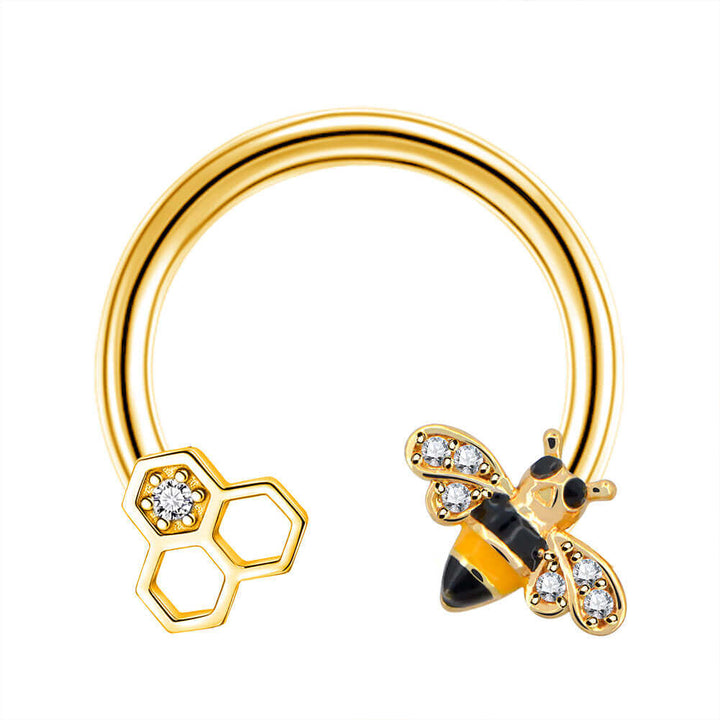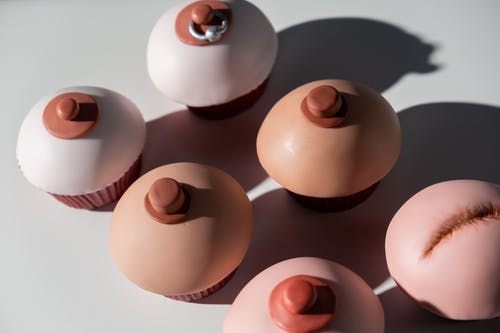
Septum Piercing: The Definitive Guideline in 2022
The nasal septum piercing can conjure depictions of colorful ethnic peoples wearing bones or feather from the center of the nose.
Alternatively, it can evoke harsh images of leather-clad punks and counterculture eccentrics with fierce bull rings.
However , in our Weatern world, college professors, military personal, and a host of so-called “ordinary” people also sport this piercing. Really, they do.
How can this be, with a piercing that sits in plain sight, right in the middle of the face?
The secret of the septum piercing is that it can easily effectively be concealed inside your nose so that only your dentist knows for sure. (When someone is poised to look up your nose with a bright, it will be somewhat visible.)
1.Overview
Description: The septum piercing is placed in the tissue that divides the nostrils.
Healing time: 4 to 8 weeks or longer
Initial jewelry style: ring-style, commonly a circular barbell, or a septum retainer
Initial jewelry gauge: 16 gauge minimum, but 14 or 12 gauge is preferred, and 10 gauge only on large anatomy.
Initial jewelry size: ring diameter of 3/8(10mm) inch, 7/16(11mm) inch, or 1/2(12mm) inch.
2.Septum Piercing: Placement and Jewelry
A traditionally placed septum piercing is not in the cartilage that divides the nostrils. Instead it rested in a sweet spot( a location optimal for piercing) in the soft, membranous tissue just below the cartilage but above the skin.
On most individuals this will be well up into the nose, toward the tip.
The traditional placement passes through minimal tissue; in fact, it is some of the thinnest skin that is pierced on a human body.
The piercing should be positioned in this location for comfort(both during the procedure and for the wearing of jewelry), ease of healing, and optimal concealment.
The size of the septum’s sweet spot does not necessarily correlate with the overall dimensions of one’s nose; a large nose can have a small pierceable area. Rely on your piercer for input about the initial jewelry gauge; you can always stretch it later.
Unfortunately, not all piercers are aware of the optimal placement or the technique needed to pierce it. Even slight asymmetry can make it very difficult to achieve a straight piercing.
At times, a ridge is present that prevents securing a receiving tube in place for the procedure. The proper location for the piercing is very specific, and on some individuals it is extremely small.
The piercing goes into the hidden recesses of the nose, so it is tricky for your piercer to see what he is doing.
Even accomplished professional often find the desired results are elusive.
Seek an expert if you want a well-placed, aesthetically pleasing septum piercing.
If you are able to openly wear facial jewelry, a captive of fixed bead ring or circular barbell are suitable.
The size should be proportionate to your nose and not so large as to interfere with eating and drinking. A 1/2-inch diameter is a reasonable maximum for most people.
A very large, heavy ring could be dangerous to your front teeth when you run or jump!
A septum retainer is effective for concealment because the U-shaped pierce of metal flips up and hides inside your nostrils.
Though acceptable, a retainer is not the best initial jewelry because it can get knocked out during cleaning, nose blowing, or sleeping.
Also, it isn’t as attractive when you do want to show off your piercing.
Short barbells or plugs with O-rings are sometimes used as retainers, but these are difficult to clean and don’t show even if you want them to, so they are not the best options.
The circular barbell is a functional and versatile style because it can hide like a septum retainer if you are not free to reveal your piercing, but is is also attractive when you want to put your jewelry on display.
A small diameter(usually 3/8 inch) circular barbell is superior for concealment, comfort, and safety.
The gap between the two balls allows your ring to be flipped up, so that the jewelry hides in your nose, but a ring that is too large will distort you nostrils from the inside.
On most builds, a circular barbell will be as hidden as a septum retainer; however, if your nostrils flare higher than your septum, some metal will show. If you require maximum concealment, charcoal-colored jewelry is best because it is darker and less reflective than shiny steel.
Your piercer can widen the gap on your circular barbell so you can wear the jewelry up with the balls still in place. It should have a snug fit when inside your nose so it won’t fall down at inopportune moments, though this makes it a little challenging to change its position.
3.Septum Piercing: Anatomical Issues
A deviated septum is a fairly common condition in which the tissue between the nostrils is displaced.
There is often a raised ridge on one side and a concave crease on the other.
This may be in the area where the piercing if this is the shape of your anatomy, but it is a lot more challenging.
There is a tendency for the ring to sit further into the crease and the other side to ride up on the ridge so that the ring rests askew.
Whether your septum is deviated or the piercing simply happens to turn out crooked, using clean or gloved fingers, you can twist the jewelry in the desired direction.
If done frequently ( ten to twenty times a day) during the first few weeks of healing, and if the piercing was placed in the sweet spot of soft tissue, it can often be coaxed into the desired position.
If you have had an injury, cosmetic surgery, or other alteration to your anatomy, tell your piercer so he can take this into consideration.
Excess bleeding is sometimes a consequence of piercing postsurgical nasal anatomy.
If you have a deviated septum, an asymmetrical nose, or otherwise challenging build, this piercing might still be worth a try.
If your piercer is willing, you trust him, and you really want the piercing, go ahead; it won’t leave any visible mark.
The worst-case scenario is that you’ll end up taking it out afterward.
If an expert does not believe you are suited to the piercing and feels he cannot achieve acceptable results, consider a different placement.
In general, septum piercing have an undeserved reputation for being painful, but the ones that are placed in the sweet spot are not often described as intense. Many piercees hardly feel more than pressure.
But, if your septum tissue is thicker than average, you have altered or challenging anatomy, or your piercing is placed incorrectly, it could feel much more tender.
4.Septum Piercing: Healing and Troubleshooting
Your eyes may water and your nose may run for several minutes following the piercing. Some piercees report feeling the urge to sneeze, but they seldom do.
Of course, bleeding is common, too, but is rarely lasts longer than your visit to the studio.
The gauge-up procedure may be used for septum piercing, and when the needle is larger than the jewelry, the piercing is more apt to bleed.
If your piercing comes out crooked and adjusting it by manually twisting the jewelry during healing doesn’t seem feasible, your piercer may offer to take out the jewelry and pierce you again.
It is only advisable to be repierced right away if the first placement was very far off from where it should have been.
Otherwise, a repiercing in the same session is apt to go right back in the same place as the first piercing, unless the entry and exit sides are swapped.
5.Septum Piercing: Septum Stench
Once your piercing is healed, you may encounter septum stench(the pungent, rotten odor that comes from the sebum that accumulates in healed piercing channels ).
It is a normal secretion from piercings throughout the body.
However ,because your septum piercing is inside your nose, the distinctive aroma is obvious when the smelly substance is inside your nose, the distinctive aroma is obvious when the smelly substance is present.
Don’t worry: only you can smell it!
The daily use of soap and water will help to diminish the smell. Wash and rinse as you rotate the jewelry under running water.
Some piercees find natural materials such as wood or bone are superior for minimizing odor.
A soak with a drop or two of lavender essential oil added to the water will provide a fresh, relaxing scent.
6.Septum Piercing: Changing Jewelry
After the initial four to eight weeks period, septum piercing are usually well healed and the jewelry can be changed.
The main challenge of swapping your septum jewelry is that you cannot easily see where the piercing is located; therefore, the process is done mostly by feel.
Since the channel is short, once you find the entrance, the exit is generally easy to locate.
7.Septum Piercing: Stretching
Septum piercings are significantly easier to stretch if the piercing isn’t placed in the cartilage or too low, in the surface skin of the septum.
With a little effort, they can usually be expanded several sizes over time. The septum can routinely be enlarged safely by one gauge as early as three months after the piercing.
Following a number of stretches, you may reach a point where the space between the cartilage and the surface tissue is filled.
Subsequent expansion will become considerably more challenging.
It is not uncommon for piercees to easily get to 6 or 4 gauge before running into this difficulty.
When a septum piercing is stretched to these dimensions, your profile may be permanently altered by a visible hole. This is likely when you stretch too quickly and lose tissue elasticity.
If your piercing was improperly placed in the cartilage or the surface tissue of your nose, it will be very difficult to enlarge.
If the piercing is low in the surface tissue, stretching can cause rejection and leave an unsightly split in your skin.
8.Septum Piercing: Retiring
The septum is one of few piercings that does not leave a visible mark if the piercing is abandoned, unless it was improperly placed or stretched to jumbo size.
If the jewelry is removed after the piercing is healed, the channel is likely to remain open, though, as usual, there is a tendency for the hole to shrink somewhat.
There is no harm in having a septum piercing that remains open but empty.
Some people insert jewelry occasionally and are able to maintain the piercing without regularly wearing anything in it.






Leave a comment
This site is protected by hCaptcha and the hCaptcha Privacy Policy and Terms of Service apply.